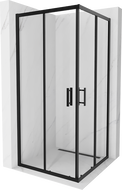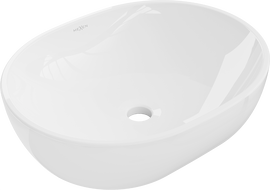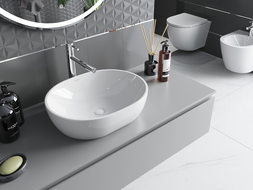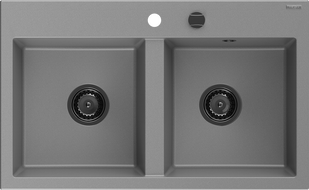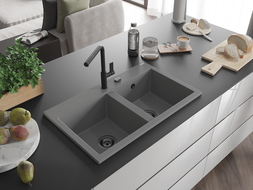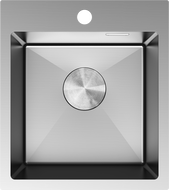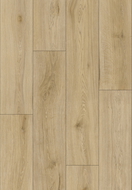
A corner bathtub is a design element that is modern, practical, and most importantly, saves a lot of bathroom space. A properly enclosed corner bathtub will be pleasing to the eye. However, it's essential to remember a few rules during its installation. At the outset, it's worth asking yourself where to place a corner bathtub. While the placement of a rectangular bathtub is often quite obvious, the case with a corner bathtub can become somewhat complicated. After all, all owners of small bathrooms know how problematic it can be to choose the location where the bathtub should be placed.
Corner baths for small bathrooms or better shower cabins?
First and foremost, for small spaces, it's worth opting for a corner bathtub. By following the right concepts related to organizing a small bathroom, you can create an aesthetic nook where you can comfortably enjoy the pleasure of bathing. Before installing the bathtub, however, it's worth considering where exactly it should stand and measure the dimensions of that space accurately. The bathtub cannot be placed directly against bathroom elements that limit access to them. It must leave free space to allow access to the sink and under-sink cabinet. No furniture should be restricted by its presence.
The bathtub, along with the corner bathtub casing, must create an integral space with the rest of the bathroom. All elements should be cohesive. If the corner bathtub is maintained in a minimalist form, the surroundings should also feature objects maintained in such a style. What to avoid in the bathroom is a mishmash of styles. Nothing is more jarring than a minimalist bathtub surrounded by posh mirrors and modern Glamour furniture. It will simply look inelegant and unaesthetic.
Placement of the corner bathtub - dependent on the bathtub model?
When considering where the corner bathtub should stand, it's worth paying attention primarily to coherence. The bathtub casing should not overwhelm other elements of the surroundings, and using the bathtub and other bathroom devices should be as comfortable as possible. An incredibly elegant solution is when the corner bathtub is opposite a large mirror. Of course, it's not always possible to allow for such a solution, as sometimes the bathroom's style is strongly determined by its specifics and size, so even the nicest corner bathtub casing may not blend well.
Though it may seem like a whim, the model of the corner bathtub affects how it will look in the interior! Just like a freestanding bathtub, a corner bathtub also dominates the bathroom, catches the eye, and attracts attention. Therefore, it's worth choosing bathtubs that match the style of the entire interior design - if we have a retro bathroom, we look for a bathtub in a classic form, with embossments or a shelf. If we are going for modern minimalism - we select simple and, through their simplicity, very effective bathtubs and solutions.
Corner bathtubs – material choice
When choosing a bathtub, it's essential to decide on the material from which it will be made. For years, three materials have reigned supreme: cast iron, acrylic, and steel. A bathtub made of steel is created from sheet metal, which is initially covered with enamel. It's heavy, which involves limited mobility. This solution is also not economical since water in such a bathtub quickly loses heat, so it frequently needs to be changed to maintain the right temperature.
A cast iron bathtub will be even heavier, capable of weighing 100 kg. Therefore, it is not suitable for bathrooms located on the upper floors of somewhat rundown buildings, where the floor below must be exceptionally strong and stable. Its advantage is, without a doubt, durability and resistance to numerous damages. Moreover, cleaning agents and excessive scrubbing don't cause any harm to it.
Perhaps the most practical solution is an acrylic bathtub, which has a surface pleasant to the touch. Water in this bathtub retains heat slowly. It is lighter than its counterparts, making both transportation and installation easier.
Corner bathtub – better than a rectangular bathtub?
Of course, a rectangular bathtub can also be placed in the corner of the bathroom and can be attached directly to two walls. However, a corner bathtub allows for more space savings. It provides more usable area and greater capacity than a longitudinal bathtub of similar dimensions.
The form of the material from which the bathtub is made influences how the entire bathroom will be perceived. However, the layout of the corner bathtub also significantly impacts where it and its casing will be placed. It should primarily emphasize other elements in the bathroom. It's the casing of the corner bathtub that reveals the main idea in the bathroom, defining its identity. It is worth ensuring that the bathtub frames are primarily solid but also cohesive with the entirety. In terms of their construction - you can choose among ready-made solutions from panels as well as plasterboard or concrete blocks. However, their surface covering determines the bathroom's style, and that's why the casing of the bathtub is so important - it simply must match the interior.
A wooden bathtub casing will perfectly suit bathrooms where there are also other wooden elements. On the other hand, ceramic tiles are the most frequently chosen option - however, the bathtub frames should stylistically differ from the floor tiles. They can correspond with the material around the mirror, the cabinet, or chairs in the bathroom. A common solution is also bathtub casings covered with the same mosaic that is on one of the adjoining walls. It's a practical solution and exceptionally pleasing to the eye.


